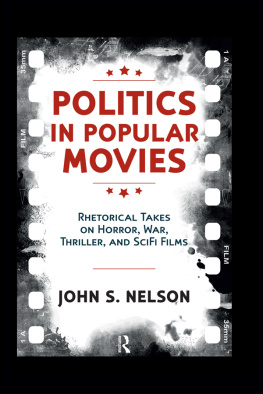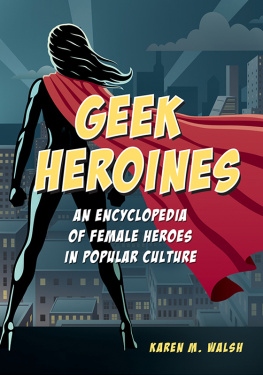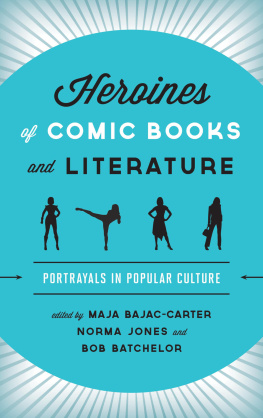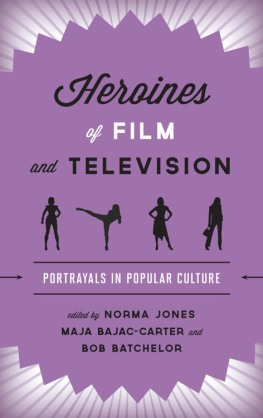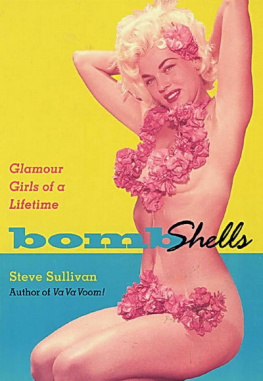www.upress.state.ms.us
Designed by Peter D. Halverson
The University Press of Mississippi is a member of the Association of American University Presses.
, Sex, Romance, and the Teenage Superheroine, was originally a keynote lecture delivered at the 10th Annual University of Florida Conference on Comics and Graphic Novels: A Comic of Her Own: Women Writing, Reading and Embodying Through Comics.
Copyright 2015 by University Press of Mississippi
All rights reserved
Manufactured in the United States of America
First printing 2015
Library of Congress Cataloging-in-Publication Data
Brown, Jeffrey A., 1966
Beyond bombshells : the new action heroine in popular culture / Jeffrey A. Brown.
pages cm
Includes bibliographical references and index.
ISBN 978-1-4968-0319-1 (hardback) ISBN 978-1-4968-0320-7 (ebook)
1. Women heroes in literature. 2. Women in popular culture. 3. Women heroes in motion pictures. 4. Mass media and women. 5. Action and adventure filmsHistory and criticism. 6. Comic books, strips, etc.History and criticism. 7. Heroines in literature. I. Title.
PN56.5.W64B76 2015
809.93352042dc232015008901
British Library Cataloging-in-Publication Data available
For Anastasia and Sydney, the strongest heroines I know.
INTRODUCTION
COLLOQUIAL TERMS USED TO DESCRIBE FEMALE BEAUTY AND SENSUALITY have a tendency to categorize sexually desirable women as dangerous. For example, women are routinely described in the media and everyday life as having killer looks, being drop-dead gorgeous, stunning, a man-eater, a knock-out, or on fire. The clear implication is that beautiful women embody an innate threat to men. Female sexuality is imagined as potentially lethal in and of itself. The phrase bombshell, in particular, has a long tradition in the media as a concise description for an extremely sexually attractive and potentially explosive woman. In 1933, Jean Harlow played the title character in Victor Flemings Bombshell, and was ever after identified as a blonde bombshell in the press. In the 1940s, when Gilda (1946) cemented Rita Hayworths status as the ultimate femme fatale of film noir, it was widely reported that a picture of Hayworth was attached to the first nuclear bomb the American military tested after World War II. Hayworth reportedly hated her status as a bombshell and destroyer of men (she also hated the story that her image was used on an actual bomb), but she was never able to move past the publics perception that her sexuality was lethal. In the 1950s, Marilyn Monroe was routinely described simply as the blonde bombshell. Monroes tumultuous personal life and her vapid sex-kitten screen roles resulted in an image of the ultimate bombshell that still defines her legacy today. The bombshell designation has continued over the years as a way to describe sex symbols such as Sophia Loren, Ann Margaret, Raquel Welch, Farrah Fawcett, Pamela Anderson, Jennifer Lopez, Salma Hayek, Megan Fox, and Scarlett Johansson. The simultaneous appeal and threat of their curvy bodies and smoldering personas is easily understood as perilously explosive. It is the irresistible sexual allure of the bombshell that marks her as dangerous to heterosexual men. Her beauty gives her power over men helpless to resist her, men who are willing to do anything to be with her. The double meaning of bombshell neatly encapsulates the dual perception of women as beautiful and dangerous. As a descriptive term, bombshell is a characterization that has been applied to sexy women by the very men who feel threatened by their sexuality.
In contemporary popular culture, the association of women with bombshells takes on a much more literal meaning. Though no less sexy than the bombshells of the past, contemporary female characters are far more likely to be actually lethalto take mens lives with a gun or a swordthan to merely ruin men through their passions. Modern bombshells may not be just sexpots; they may also be explosives experts. The pixie-sized Fiona Glenanne (Gabrielle Anwar) on the long-running television series Burn Notice (20072013) would just as soon blow up a car, house, or boat than rely solely on her sexuality. As Fiona says in one episode, after hiding out under a parked car: You have no idea how painful it was to be under that car and not wire it to explode (season 3, ep. 7). Fionas passion for explosives makes her one of the most dangerous members of the Burn Notice team, and makes all of her hardened male allies nervous. When one of her teammates, Sam Axe (Bruce Campbell), an ex-Navy Seal, pleads with her, Easy on the explosives, Fi. Were trying to nail this guy on corruption charges. Could be tough if hes in little pieces, Fiona casually points out: Well save on shipping (season 3, ep. 1). In another episode Michael Westen (Jeffrey Donovan), a blacklisted spy and Fionas on-again/off-again boyfriend who always tries to reign in her violent tendencies, is in danger of being caught by the police with explosives. Fiona tells him: This is a valuable lesson for you. C-4 is meant to be used, not stored. Im serious. All those times you told me to make the explosion smaller.... I shouldnt have listened to you (season 3, ep. 2). Fiona is certainly beautiful, and the series often finds reasons for her to use her sexuality on missions (I return to this issue in ), but she is always presented as dangerous first and sexy second. The quirky, forthright, and violent Fiona Glenanne quickly became a favorite character for many Burn Notice fans and inspired countless websites and blogs dedicated to her passionate use of explosives. An article in the New York Times praised Fionas skillsshe can build explosives the way the rest of us make toastand argued that Fiona steals the show, turning it into a winning post-feminist revenge fantasy. Fiona fights for us all (Bellafante, January 30, 2009). Female characters in modern action films and television, like Fiona, are redefining what a bombshell is. The modern sex bomb may also be a bomb expert. Sex and feminine wiles are no longer the only weapons in a womans arsenal. Modern heroines may literally be armed to the teeth rather than just dressed to kill. Though it has been long in development, women are assuming lead roles in action narratives on a fairly regular basis. The action heroine is steadily becoming a viable role for women.

Fig. 0.1. Fiona Glenanne is more bloodthirsty than her male teammates on Burn Notice.
The Hollywood action heroine is a character who has finally established a record of popularity and profitability after years of uneven success at the box office. Fictional women in contemporary popular culture are just as likely to be super-spies, superheroes, monster slayers, avengers, detectives, kung fu masters, and revolutionary leaders as they are damsels in distress or romantic leads. For feminist film studies, the figure of the action heroine has proven an especially interesting character because she occupies a position so closely aligned with cultural conceptions of ideal masculinity. The modern action heroine can fight, shoot, solve mysteries, and save the world as well as Rambo, James Bond, or Indiana Jones ever did. This progressive development in acceptable depictions of female heroism has led to an impressive amount of scholarly consideration and debate about the gendered and cultural significance of action heroines (see, for example, McCaughy and King 2001, Inness 2004, Mizejewski 2004, Schubart 2007). As female characters assuming a masculine-identified role within a genre (or a range of subgenres) deeply rooted in masculine fantasies of empowerment, the action heroine provides an access point for reconsidering changes in both gender and genre. The recent success of such blockbuster series as the




